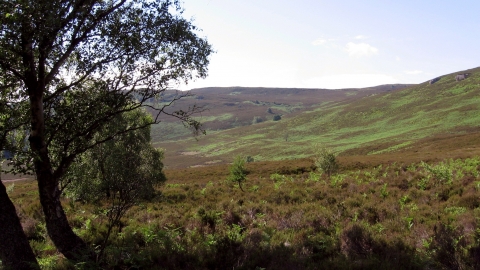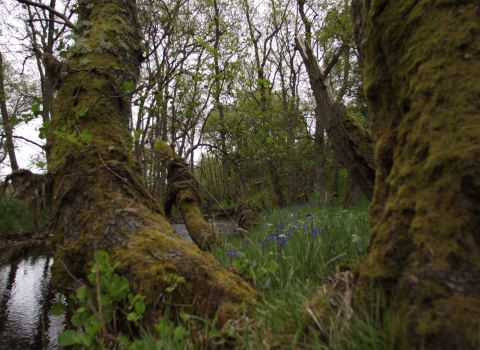
Harbottle Crags. Image by: Duncan Hutt.
Know before you go
Dogs
When to visit
Opening times
24/7/365Best time to visit
All year roundAbout the reserve
The site is largely covered by upland heather and the peat bog at the eastern end of the lough has formed from a layer of sphagnum moss growing over deep water. The bog flora includes the carnivorous round-leaved sundew whilst the damp flushes contain bog myrtle. The area contains important outcrops of the fell sandstone group and consists of extensive areas of dwarf-shrub heath with associated blanket bog and valley mire.
The plants and animals are typical of upland moorland communities, some locally rare. The flora is dominated over much of the area by heather. Other species include cross-leaved heath, cowberry, bilberry, crowberry, bell heather, petty whin and tormentil. Bracken is very widespread, particularly on the steeper better drained slopes and is steadily expanding its area. In the flat waterlogged areas between the cliff lines there are mires dominated by bog mosses. They support typical mire species including hares tail cotton grass, common cotton grass, deer grass, cranberry, round leaved sundew and bog asphodel. There are a few, small, semi-natural woodland areas confined to the cliffs and steep gullies where they have escaped burning and grazing. Tree species are confined to mainly birch and rowan.
The cliffs, screes, gullies and tops of big boulders support dwarf heath vegetation and, as with the woodland, the protection from grazing and burning has allowed ferns to flourish. Two common species are hard fern and broad buckler fern. North facing rocks have bryophytes and lichens. An interesting feature of Harbottle Moors is the widespread occurrence of bog myrtle. This shrub occurs in nutrient poor flushes and is especially important given the scarcity of bog myrtle elsewhere in Northumberland. Harbottle Lough attracts water birds such as teal, goosander and little grebe. The open moorland supports the locally scarce ring ouzel, snipe, curlew, wheatear, whinchat, skylark and red grouse, all restricted in their range by requiring upland habitat. Bird of prey include merlin, sparrowhawk, peregrine and short-eared owl. Harbottle Moors supports a wide range of invertebrate species and has both the emperor moth, large heath butterfly and the green hairstreak butterfly. Tiger beetles are often seen scurrying along the sandy paths. Adder, slow worm and common lizard have all been recorded on the site. There are the remains of old millstone quarrying on the site including partially cut out stones, and the reserve includes the Drake Stone (an excellent viewpoint across the Coquet Valley), where nearby rocks have been scratched and polished by the ice sheet of the last glaciation. The site is managed in partnership with Forestry England.

